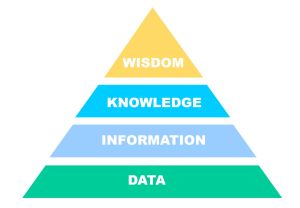Knowledge: Difference between revisions
Jump to navigation
Jump to search
No edit summary |
No edit summary |
||
| Line 4: | Line 4: | ||
=Notes= | =Notes= | ||
Data, information, knowlegde and wisdom are distinguished in the DIKW-model. | Data, information, knowlegde and wisdom are distinguished in the DIKW-model. <ref name="ref2">Wikipedia: DIKW-pyramid. [https://en.wikipedia.org/wiki/DIKW_pyramid] </ref> | ||
=Subordinate concepts A= | =Subordinate concepts A= | ||
| Line 14: | Line 14: | ||
=Subordinate concepts B= | =Subordinate concepts B= | ||
[[File:Tatic-vs-explicit-knowledge-1200x902.png|thumb|Explicit versus tacit knowledge]] | [[File:Tatic-vs-explicit-knowledge-1200x902.png|thumb|Explicit versus tacit knowledge]] | ||
Subordinate concepts of knowledge are: | Subordinate concepts of knowledge are: | ||
* [[Implicit knowledge]] or tacit knowledge | * [[Implicit knowledge]] or tacit knowledge | ||
Revision as of 15:41, 10 December 2022
Definition
Knowledge is a human or organizational asset enabling effective decisions and action. [1]
Notes
Data, information, knowlegde and wisdom are distinguished in the DIKW-model. [2]
Subordinate concepts A
- Facts: propositional or descriptive knowledge [3]
- Skills: procedural knowledge [4]
- Objects: acquaintance knowledge
Subordinate concepts B
Subordinate concepts of knowledge are:
- Implicit knowledge or tacit knowledge
- Explicit knowledge
Domain
Thinking about the concept of knowledge belongs to the field of epistomology [5].
Characteristics
Characteristics of knowledge that can be distinguished are:
- Clarity
- Completeness
- Accuracy
- Timeliness
- Accesibility
- Relevance
- Concreteness
- Consistency
- Value
- Structure
- Status
- Version

